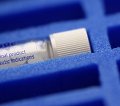 rVita emailed me today to enthuse about a purportedly “wonderful resource”, which is apparently the web’s first integrative medicine community (funny they should claim that as I had someone else emailing to tell me yesterday about their first such site too).
rVita emailed me today to enthuse about a purportedly “wonderful resource”, which is apparently the web’s first integrative medicine community (funny they should claim that as I had someone else emailing to tell me yesterday about their first such site too).
Anyway, I checked out the site, and am very, very disappointed, the first article I read was wrong, wrong, wrong. Homeopathy is most certainly not a viable alternative to vaccination against lethal diseases like polio, tetanus, and measles. To claim otherwise is not only seriously misleading but incredibly dangerous.
We’ve discussed some of the supposed issues surrounding possible problems with conventional vaccines here before, but homeopathy cannot prevent anyone from contracting such serious illness. No matter how hard followers of Hahnemann’s idea that diluting a substance repeatedly until absolutely none of the original compound remains in one’s vial and all the while repeatedly bashing the vial against a Bible believe it to work, it does not.
There is no valid, reproducible evidence of the efficacy of homeopathy as prophylaxis for serious disease where a vaccine would usually be used to prevent infection. The rVita article claims:
“Based on principles of natural law, you can receive protection against the flu or any disease including polio, tetanus, and measles by natural immunity.”
Seriously, there is no scientific basis nor evidence for any of the claims of homeopaths, particular with regard to prophylaxis against lethal diseases. This is as true in National Homeopathy Week as at any other time of the year.
rVita originally suggested the site would be “wonderful resource for any upcoming articles you might be planning on alternative or integrative medicine, Health 2.0, health resources on the Internet, or any other health-related topics,” well it does provide fodder for my highlighting some of the sillier claims of alt med.
Apparently, for users of the rVita community, “whether researching alternative remedies for allergies, infertility, insomnia, chronic pain or even adjunctive care for cancer, users can turn to rVita for help in separating the science from the snake oil.”
Hmmm…as well as the unfounded case of homeopathy, they also discuss Reiki therapy, therapeutic touch, art therapy and the like. Beyond, the placebo effect (which is admittedly very powerful) none of these or many other alternative therapies have any basis in reality
The exceptions, of course, are some herbal remedies. After all, a large proportion of modern drugs from aspirin and AZT to ephedrine and taxol are based on natural products. And some of the manipulating methods such as osteopathy and chiropractic, while dubious in their origins and some of their wider claims, do have physical effects. I was discussing such matters as the claims of chi, energy fields and auras with a colleague in the telecommunications industry who asked, scathingly, “In what units is this universal energy measured?” It’s a rather insightful put down.
Meanwhile, Niteen Bhat Founder CEO of rVeda Inc, of Santa Clara, California, and parent company of the rVita website, contacted me in response to my email respone to their approach. This is what he had to say:
I just wanted to highlight a few things about our philosophy to present our side of the story: Our goal is to bring perspectives from both for “for” and “against” constituents for a particular therapy or modality to enable informed decision making and separate science from snake oil. We welcome experts such as yourself to either comment on any article or even write your own articles that highlight issues with any remedy. That’s the power of Web 2.0 that we are unleashing on CAM.
Having said that, consumers and integrative medicine folks are finding some of these therapy to be effective even though scientific trials are inconclusive or not done yet. One of the reason being that many CAM therapies take personalized medicine approach and essentially have slightly different variants of therapies for each individual. This is exactly the reason we currently do not promote product sales, or do-it-yourself therapies, but expect consumers to get healed via licensed CAM practitioners.
Our content is overseen by conventional medicine MDs (I have copied our Chief Medical Advisor on this email). We did discuss the issues raised and came to [the] conclusion that we need to highlight practitioner articles as such so that we keep sanctity of our select/carefully chosen experts and their opinions. We have decided to separate practitioner articles under separate categories.
So, my review of their site has had a rather positive effect, but efforts to dry up supplies of snake oil must continue.
Many commentators will not accede to using words such as “complementary” or “integrated” to refer to alternative medicine, the name change falls into the same camp as switching from “creationism” to “intelligent design”, as far as I am concerned. Show me the evidence in the form of large-scale, robust, placebo-controlled, double or even triple, blind, clinical trials, however, not spurious poorly controlled tests and selective meta studies, and I’m a believer.
If it produces a sound akin to that of the aquatic avian species falling under the taxonomic name Anas platyrhynchos platyrhynchos, then it really is best avoided, especially if you wish to stay free of lethal diseases.
For an excellent summary of alternative medicine the fact and the fiction, check out Singh and Ernst’s book Trick or Treatment
 First online in The Alchemist, this week, is an award for pioneering work in mass spectrometry and the study of molecules colliding with surfaces.
First online in The Alchemist, this week, is an award for pioneering work in mass spectrometry and the study of molecules colliding with surfaces. Apologies if, like me, you’re a Brit and prefer to refer to petrol and diesel, then apologies for today’s post title. But, I’ve noticed a flurry of complaints from Americans about the price of vehicle fuel, recently, and just had to comment. Complaints about the price of gas? I hear the good folks of England, Wales, Scotland, and Northern Ireland exclaim! Yes, indeed, apparently, filling your tank Stateside now costs a staggering $4 per gallon (about 8 pounds sterling!) Pah! You say, us Brits are paying the equivalent of over $10 per gallon these days.
Apologies if, like me, you’re a Brit and prefer to refer to petrol and diesel, then apologies for today’s post title. But, I’ve noticed a flurry of complaints from Americans about the price of vehicle fuel, recently, and just had to comment. Complaints about the price of gas? I hear the good folks of England, Wales, Scotland, and Northern Ireland exclaim! Yes, indeed, apparently, filling your tank Stateside now costs a staggering $4 per gallon (about 8 pounds sterling!) Pah! You say, us Brits are paying the equivalent of over $10 per gallon these days. Fresh, clean water is going to be increasingly in short supply. Despite the recent heavy rains across Southern Europe, the building of desalination plants in such regions, and the shipping in of water supplies from elsewhere is likely to increase in coming years, while desertification will maintain its dehydrating crawl and some regions of the developing world will continue to die of thirst in hotter dry season, while squandering the precious harvest of the rainy season.
Fresh, clean water is going to be increasingly in short supply. Despite the recent heavy rains across Southern Europe, the building of desalination plants in such regions, and the shipping in of water supplies from elsewhere is likely to increase in coming years, while desertification will maintain its dehydrating crawl and some regions of the developing world will continue to die of thirst in hotter dry season, while squandering the precious harvest of the rainy season. Reminiscences on a serious Stateside gun crime: You would think you wouldn’t find a less controversial topic to write about than the analysis of heavy metals using thermal ionisation mass spectrometry (TIMS). In some ways it must sound like the dullest topic in the world, beyond those who work with MS. However, when the metal in question is lead, and its source is ammunition then I should have been prepared for a flame-war from the US readership over one particular specialist publication for which I wrote on the subject a few years ago. The bottom line is: don’t make flippant remarks connecting guns and ill health unless you want to be shot down in flames.
Reminiscences on a serious Stateside gun crime: You would think you wouldn’t find a less controversial topic to write about than the analysis of heavy metals using thermal ionisation mass spectrometry (TIMS). In some ways it must sound like the dullest topic in the world, beyond those who work with MS. However, when the metal in question is lead, and its source is ammunition then I should have been prepared for a flame-war from the US readership over one particular specialist publication for which I wrote on the subject a few years ago. The bottom line is: don’t make flippant remarks connecting guns and ill health unless you want to be shot down in flames. I discovered a rather intriguing perspective on the world of wellbeing, health and nutrition in the latest issue of the journal World Review of Science, Technology and Sustainable Development (2008, 5, 104-123). In it, Sundus Tewfik of the Department of Health and Human Sciences at London Metropolitan University and Ihab Tewfik of the University of Westminster, shed light on nutraceuticals, or functional foods as they are sometimes called. You will doubtless have seen mention of functional foods and botanical dietary supplements as they seem to fill the advertising space in Sunday supplements and feature regularly in lifestyle magazines.
I discovered a rather intriguing perspective on the world of wellbeing, health and nutrition in the latest issue of the journal World Review of Science, Technology and Sustainable Development (2008, 5, 104-123). In it, Sundus Tewfik of the Department of Health and Human Sciences at London Metropolitan University and Ihab Tewfik of the University of Westminster, shed light on nutraceuticals, or functional foods as they are sometimes called. You will doubtless have seen mention of functional foods and botanical dietary supplements as they seem to fill the advertising space in Sunday supplements and feature regularly in lifestyle magazines. A simpler, gentler eye test based on Raman spectroscopy could spot ocular infection and other problems without irritating patients, although they may be required to yawn during the procedure. Whichever way you look at them, whether through the emotional blur of crying or as lachrymal secretions ripe for analysis, tears are complex. Now, researchers in the UK, have taken a close look at this aqueous solution of proteins, metabolites, electrolytes and lipids using Raman spectroscopy and obtained results that would make any ocular enthusiast cry with joy. Read more about this today in a sneak preview of my SpectroscopyNOW column for June 1.
A simpler, gentler eye test based on Raman spectroscopy could spot ocular infection and other problems without irritating patients, although they may be required to yawn during the procedure. Whichever way you look at them, whether through the emotional blur of crying or as lachrymal secretions ripe for analysis, tears are complex. Now, researchers in the UK, have taken a close look at this aqueous solution of proteins, metabolites, electrolytes and lipids using Raman spectroscopy and obtained results that would make any ocular enthusiast cry with joy. Read more about this today in a sneak preview of my SpectroscopyNOW column for June 1.